Drought. Nutrient depletion. Bending over with a bad back or dealing with mobility issues. Have you ever had to battle with any of these gardening-impeding troubles? Don’t you wish there was an accessible method for growing your own food that eliminated these problems and more? Maybe keyhole gardens are the answer you’ve been looking for.
What Are Keyhole Gardens?
Keyhole gardens are specifically-designed raised beds that recycle old materials, can create nutrient-rich soil, and, most importantly, are entirely accessible, even if an indvidual is restricted in some of their physical abilities. In order to understand a keyhole garden and why it may be a great fit for your growing space, let’s break down the design, bit by bit, and see what the fuss is all about.
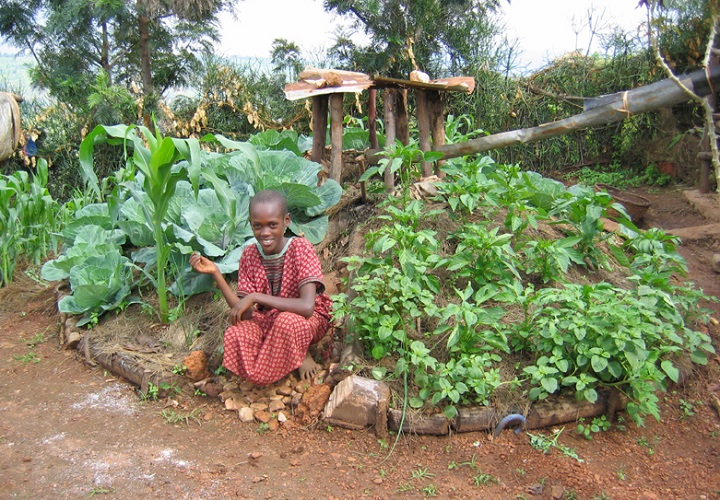
Keyhole Shape
Keyhole gardens are so named for their ressemblance to an old-style lock entrance–the sort that skeleton keys once fit into. The original design of the garden is a circle with a rectangular entrance that leads all the way to the center of the garden itself. Now, this distinctive shape isn’t just for looks.
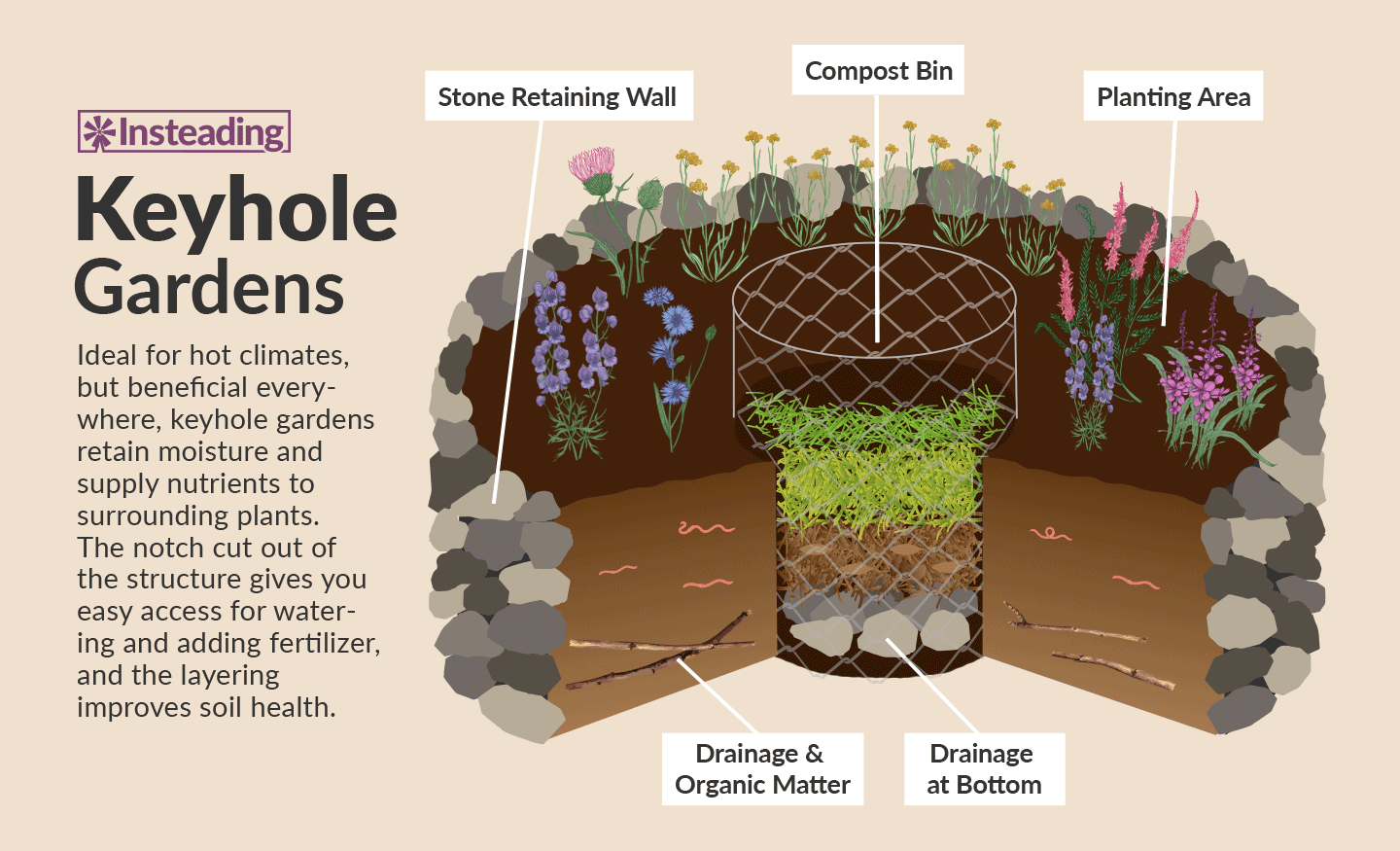
It’s intended to allow maximum acess to all areas of the garden’s growing surface, eliminating the need to walk on the garden (which reduces soil compaction) and avoiding having any difficult-to-reach areas.
The Compost Basket
At the center of the keyhole garden is a compost basket–it may be made from metal, sticks, concrete, or cloth, but the purpose is the same: it’s meant to hold high-nutrient materials and allow them to break down slowly. Greywater, manure, vegetable scraps, and other organic materials go into the basket, and as water moves through the mushy, rotting mess, it carries the decomposing goodness and hydration straight to the roots of the plants themselves. Over time, the basket will undoubtedly become filled with rich compost, which can then be removed and spread over the surface of the garden.
As a word of advice, I’ve encountered some websites that recommend “discarding” the “depleted” compost once it is totally broken down. This boggles my gardener’s mind, because that black gold is simply some of the best, soil-enriching stuff you could spread on your keyhole garden’s surface. Ignore such instructions!
Outer Edge
The wall that surrounds the garden should, in theory, be a material that can be built higher and higher as the soil matter increases in the garden itself. The original keyhole gardens were often made of dry stacked stone, recycled bricks, pieces of concrete, or really any scavenged material hard enough to hold the soil in and stable enough to support a person’s leaning weight. Nowadays, you can find keyhole gardens built out of recycled glass bottles, straw bales, wattle, or even formalized masonry work.

The garden planting surface is raised higher than the typical raised bed. This can be achieved by layering a large variety of materials such as wood waste, newspaper, ashes, twigs, and even animal bones. Soil is placed atop the pile once it has reached close to the desired height.
A version of the keyhole garden is often included in discussions of permaculture design–they’re specifically meant to reduce foot traffic on growing surfaces, allowing perennials to grow unimpeded by soil compaction. Permaculture-style keyhole gardens are usually not built as tall as the original design, and often lack the center compot basket. (Instead, a tall garden that does include a center compoting ring is sometimes termed a “banana circle.”)
Where did Keyhole Gardens Begin?
The easy-access nature of the keyhole garden was intentional. The design as we now know it was developed in Lesotho by the Consortium for Southern Africa Food Security Emergency (C-SAFE) in the 1990’s (they took inspiration for their design from a raised garden invented by CARE in Zimbabwe).
During that era, Lesotho was plagued by one of the highest HIV/AIDS rates in the world. These gardens were able to give the sick, weakened, or otherwise unable residents of Lesotho the ability to keep growing their own food, even if they weren’t physically able to farm in the traditional manner. “They are tall enough that people do not have to bend over while working in them, sturdy enough that a person who is weak can lean against them while they work, and small enough that the entire bed is within arm’s reach.”

The gardens did very well, even in drought, even in areas with eroded, depleted soil. So well, in fact, that the design was picked up and carried throughout much of Africa, where people of all abilities implemented its thrifty, nutrient-dense, and accessible nature.
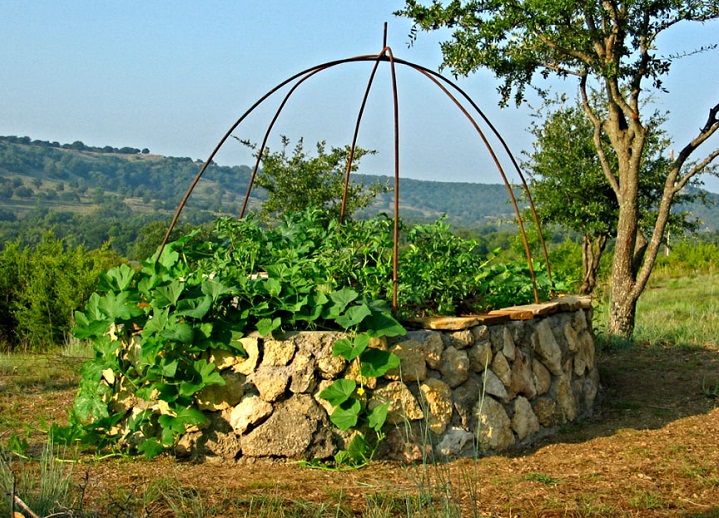
The keyhole notably made it’s way to the States via Texas, where further modifications on the design included changing the diameter from two meters to 6 feet wide (since Americans will do anything to avoid using the metric system, it seems!), and adding red wiggler worms as an essential element of the central compost basket.
What Plants Grow Best In A Keyhole Garden?

Not every plant thrives in such a concentrated and space-sensitive nutrition environment. You may have noticed that most photos of keyhole gardens feature large, lush specimens of leafy greens–these plants are able to maximize the ample nitrogen supplied by the compost by creating huge vertical leaves, yet won’t take over the somewhat restricted space. Lots of root vegetables work well, too, with lush upper growth creating large, easy-to-harvest roots and tubers below. Here’s an incomplete list of plants that should do well in the Keyhole Garden.
- Carrot
- Onion
- Beets
- Radish
- Turnips
- Garlic
- Lettuce
- Swiss Chard
- Spinach
- Mustard
- Herbs
All that said, there are some plants that some websites indicate are not completely ideal for this design. They may spread out too far, grow too tall to be easy to harvest, or have different nutrient requirements than that provided by this lush raised bed. You’re certainly not forbidden from planting the following in your keyhole garden, of course–several of the photos below obviously have these plants included–but bear in mind that they may be a bit of a challenge for this specific garden design.
- Tomatoes
- Peppers
- Eggplant
- Corn
- Squash
- Some types of Beans
Inspiration Photos For Your Garden Designs






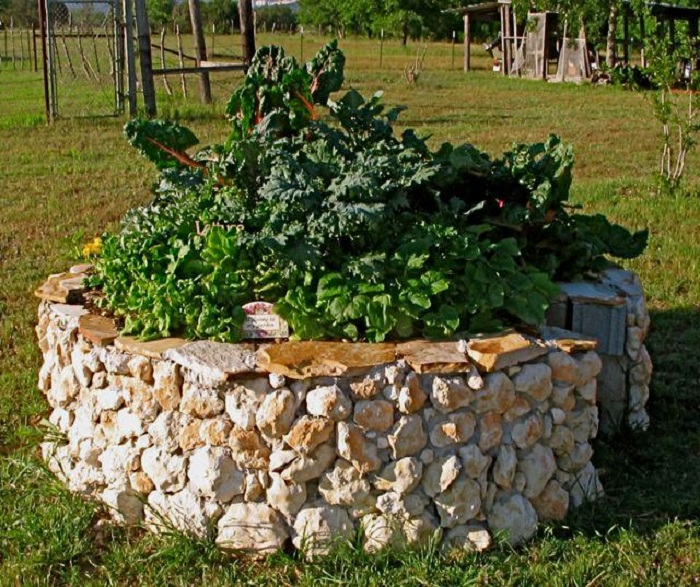
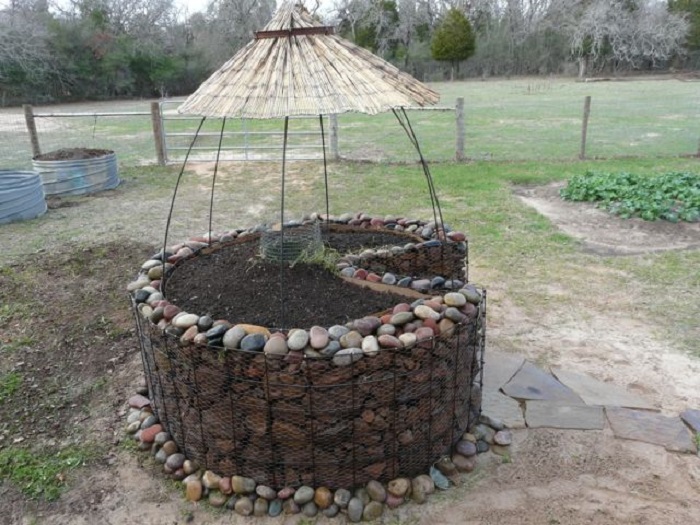

Keyhole Garden Resources
- Plant Your Garden In A Keyhole by W. Leon Smith
- Soiled Rotten: Keyhole Gardens All Year Round by Deb Tolman, Ph.D.
- The Quarter-Acre Farm: How I Kept the Patio, Lost the Lawn, and Fed My Family for a Year by Spring Warren
- Gaia’s Garden: A Guide to Home-Scale Permaculture by Toby Hemenway










































Lots of key hole gardens here look nothing like the original, which makes this kind of confusing. I would edit those not true keyhole gardens out for some sort of consistency.
Please don’t edit out the unusual Keyhole gardens. They offer up great ideas.
Hey Kane and fellow insteaders.
My re-wilded rock quarry needs your keyhole idea applied to it. And on the subject of vegetables and vegetarianism (don’t know if that’s an actual word but it should be) my
copy of Walden’s been my guide in life and diet. Thoreau wrote that one of his neighbors was of the opinion that one can’t build muscle and bone on a vegetable diet all the while being dragged about his field by an ox that was comprised, muscle and bone, of a purely vegetable diet. Got to get to work implementing the Keyhole Gardening Method up here on Grogan Hill.
Thanks to all you Inspiring Insteaders.
Edgar
What exactly is the layering I know you’ve said browns and greens but what exactly are the browns and what exactly is the greens and what exactly are the layers that go into it
Hey Amber, greens are materials that are nitrogen-rich like grass clippings, table scraps, and weeds. Greens tend to still be wet/hydrated. Browns are carbon-rich materials like leaves, wood chips, shredded paper, etc. Browns are usually dry and help suck out the moisture from the greens.
Thank you
Excellent answer for beginners